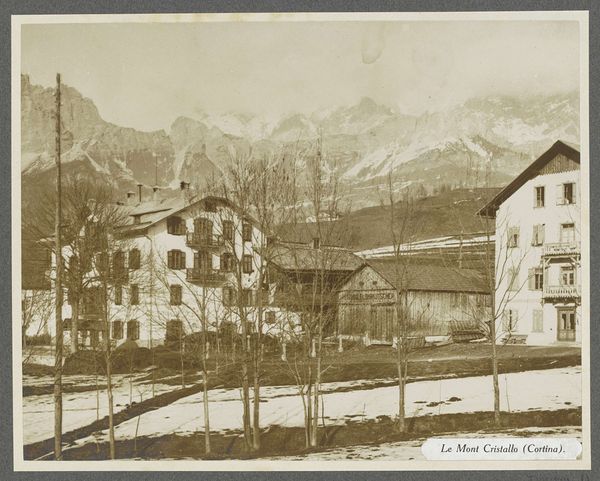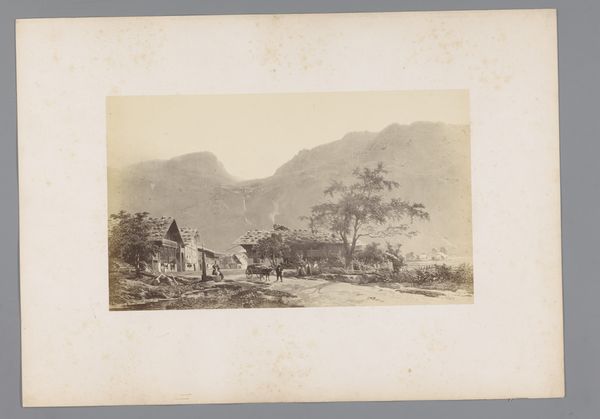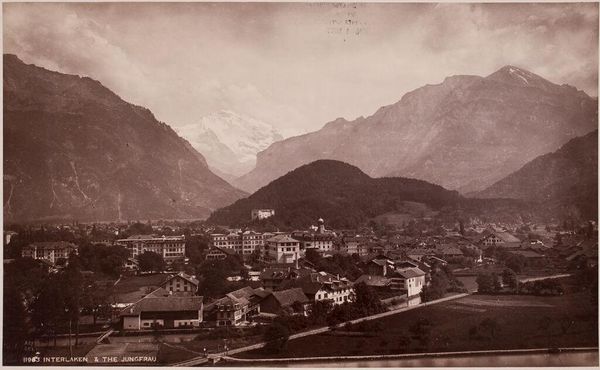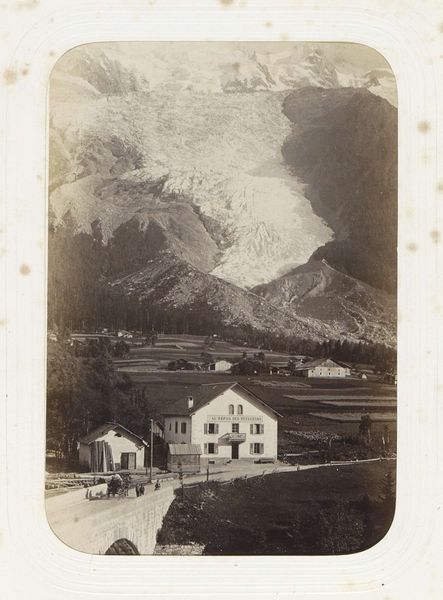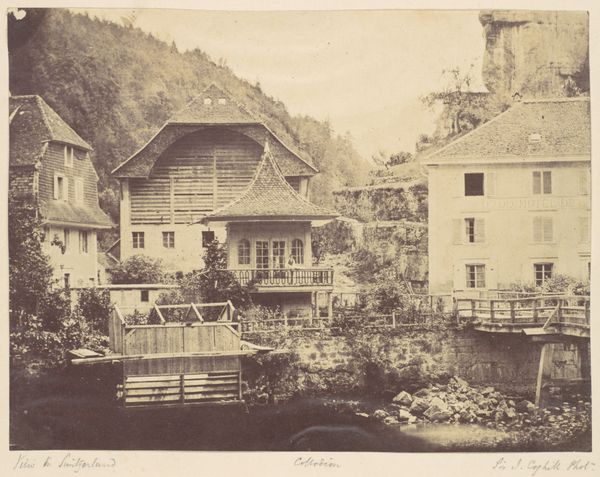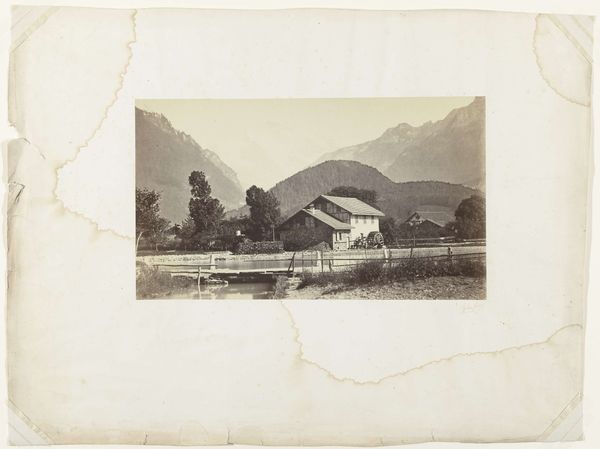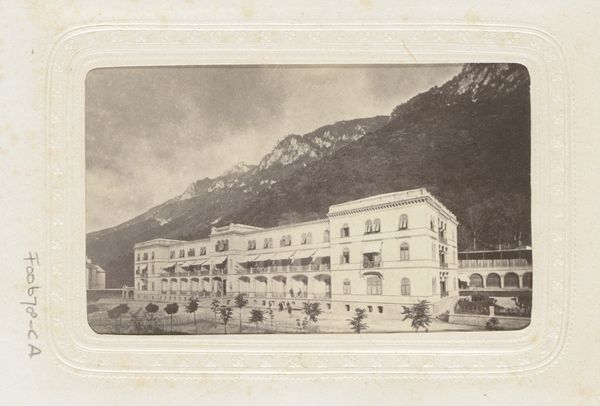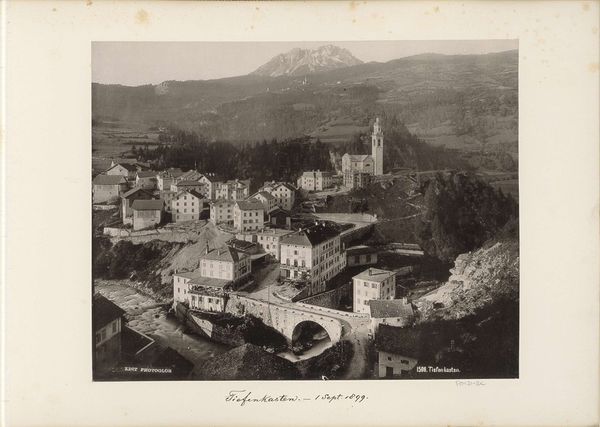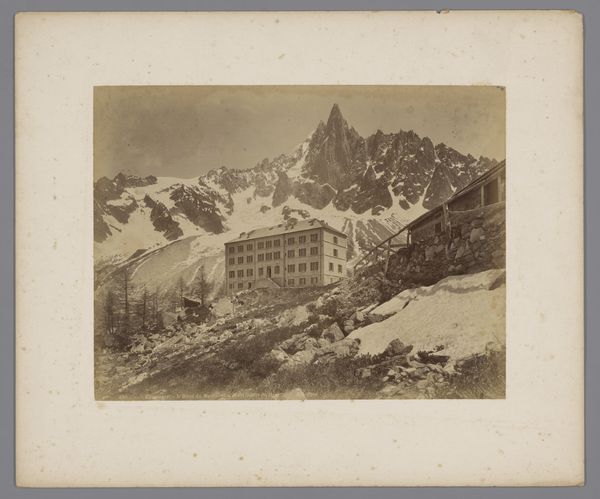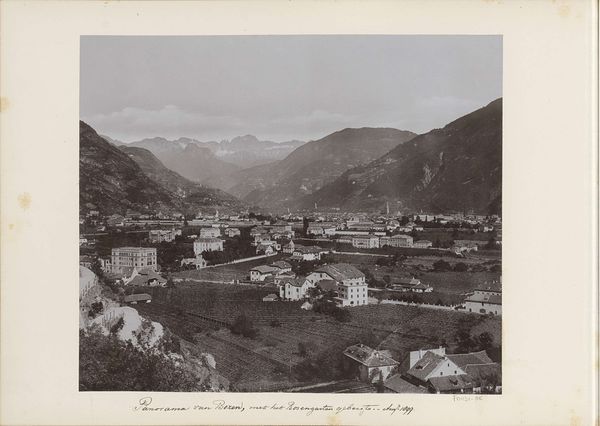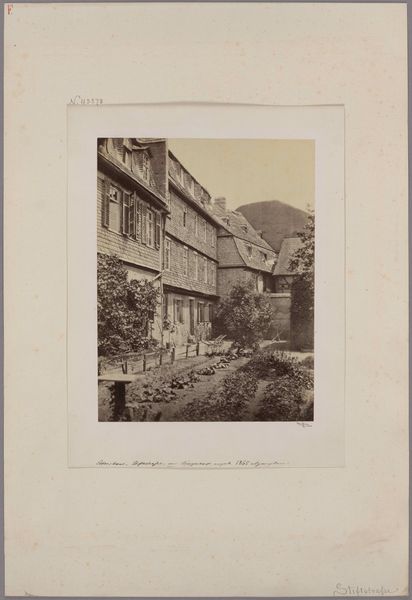
Hotel Wildenmann in Meiringen, gelegen naast de kerk c. 1881s - 1891s
0:00
0:00
#
photo of handprinted image
#
aged paper
#
toned paper
#
photo restoration
#
ink paper printed
#
old engraving style
#
carved into stone
#
golden font
#
pencil art
#
watercolor
Dimensions: height 205 mm, width 248 mm, height 277 mm, width 367 mm
Copyright: Rijks Museum: Open Domain
Curator: There's a distinct stillness to this print, almost sepia-toned silence. Editor: Indeed. This photograph, "Hotel Wildenmann in Meiringen, gelegen naast de kerk" by Giorgio Sommer, dating from the 1880s or 90s, offers a glimpse into a moment frozen in time. It is now held at the Rijksmuseum. The composition is striking: a grand hotel, nestled alongside a quaint church against a backdrop of majestic mountains. Curator: The texture of the paper is interesting. There’s a sense of age, a physical history that I find quite compelling. One can almost trace the evolution of the image and its support. Editor: Exactly. These early photographs served not just as images but also as documents reflecting societal shifts of travel and leisure culture in the late 19th century, consider the hotel’s construction— the labor, resources, and the growing market for tourism driving this development. Curator: Focusing on that contrast between the architectural forms themselves. The solid, geometric hotel juxtaposed with the church’s pointed spire is almost dialectical. The materiality reflects permanence—one seeking comfort and leisure, the other, spiritual refuge. Editor: A fascinating contrast. We can interpret this duality within the frame using semiotics: these forms generate a layered meaning. And consider what's implied, as these buildings relate to the local workforce. How many individuals were required to operate the Wildenmann? Curator: That context really enhances our experience of the print, revealing it as more than just a pretty picture; it captures evolving systems of labor. The making of such image involved a photographer who must be equipped and financed to move through and take photographs and sale them to people from this context! Editor: By using structural analysis and dissecting formal arrangements alongside production, the cultural object reveals so much more to us. What at first appeared as an unassuming Swiss view offers insights into material history, while the other, in turn, provides ways of interpreting and questioning what might otherwise remain unseen. Curator: Very insightful. Viewing art in this way enriches not only our intellectual appreciation, but it is important to understanding our past and present conditions of being.
Comments
No comments
Be the first to comment and join the conversation on the ultimate creative platform.

